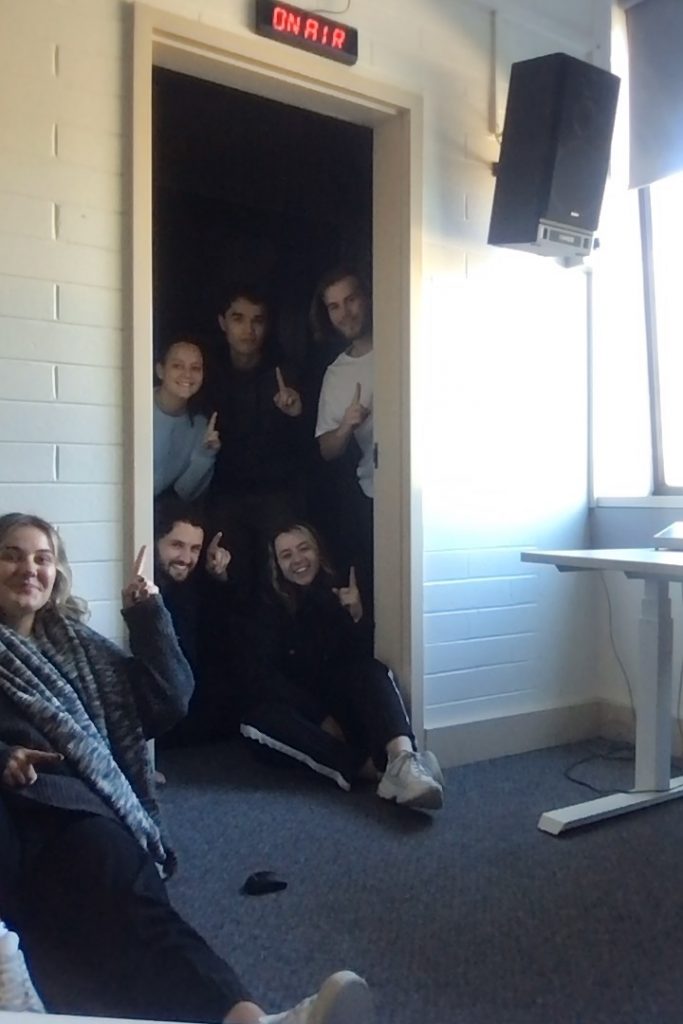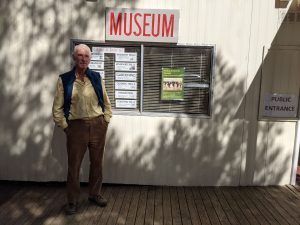(This story has been left intentionally unheadlined)
By DION PRETORIUS
ROBOTS, monsters, Yoda and the confronting nature of Australian street art, have exploded onto the walls of the National Gallery of Australia in a vibrant and fluorescent mix of colour.
Space Invaders, the NGA’s newest exhibition, attempts to tame the street and drag it kicking and screaming on to canvas.
When you think of the National Gallery, you could be forgiven for recalling artists like Claude Monet, Sidney Nolan and Jackson Pollock, with their works hung in ordered frames. This exhibition, however, is a new and different approach.
Space Invaders features more than 150 works by more than 40 street artists like Sync, Prism, Nails and Ghostpatrol.
With names like these, you can tell this is not your traditional exhibition.
From the moment you step into the space, you are greeted by a wall, bare except for the words “This wall has been left intentionally blank”, framed, red and confronting in their irony.
As you step further into the exhibition, stickers cover the space and the usually ordered walls have been transformed by the rebellious nature of the street art they are trying to contain.
This cheeky exhibition coaxes you into considering politics, religion, sex and war, which is what characterises this developing artistic genre.
Street art has only recently hit the Australian art scene, as the director of the National Gallery of Australia, Ron Radford, explained.
“One of our policies is to collect Australian art, right up to this moment,” he said. “And this is right up to this moment!”
Street art is usually found in the alleyways and back streets of most major cities, colourful and invasive in it’s form, confronting, fluorescent, Space Invaders.
According to the assistant curator in international prints and drawings at the NGA, Jaklyn Babington, “Street art is something that you can’t categorise, you can’t define. It’s experimental, it’s constantly changing and it’s really diverse and complex.
“We recognise graffiti as a legitimate art form as well. It’s just that street art is very different to graffiti, and that’s what we are trying to educate our audience about.”
Rather than using their work to claim territory or communicate with other graffiti artists, street artists generally use their medium to talk to anyone who will listen. Street art doesn’t discriminate, but looks to inspire ordinary people.
Babington explains that Space Invaders aims to teach people that traditional forms of vandalism, like tagging and train bombing, are being transformed from something temporary into collectable art.
“Six or seven years ago, there were a number of artists that would never put their works on paper,” she says. “They would always do them as wall based street works. So it’s been a collection built from a transition in the scene.”
Radford is also excited about the movement, describing it as a “dynamic aspect of Australian art” with exciting possibilities for the future.
“Sometimes it’s a protest,” he says. “Sometimes it’s just an expression of fun and taking the mickey out of society, but it’s a celebration, it’s a liberation.”
For the artists themselves, however, this art form involves some deeper emotions.
Nails, a self described multi-disciplinary artist who is featured in the exhibition, says street art is community, energy and a reason to live.
Bored with life, Nails turned to street art during a difficult period in his life. He found in the medium a renewed purpose and inspiration.
“For me it was a saviour,” he explains. “I was very bored with life. I needed an outlet and an interest to take me out of (it).”
Proud that his work has made it to the National Gallery of Australia, he says that even though it’s important for people to have access to street art, once it’s off the street it loses something.
“Once it’s off the street I don’t really consider it to be street art,” he says. “The location defines it, the context defines it as street art.”
Aware of the issue, Radford enthusiastically explains that the NGA has been careful in how they approached the layout of this exhibition.
“We have tried hard not to present this… in the traditional way” he says. “We’ve tried to hang it with the street in mind.”
As for those visiting the exhibition, Radford says he hopes they will be “stimulated, amused, challenged” and perhaps go looking for street art originals in the Melbourne alleyways.
“But not on their own I hope,” he adds jokingly.
Space Invaders, at the NGA, is open to visitors until the 27th of February 2011. Entry is free.





Be the first to comment!